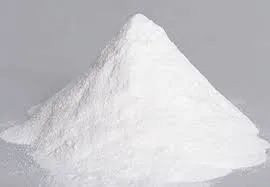
Dec . 09, 2024 17:32 Back to list
Exploring the Chemical Structure and Properties of Hydroxypropyl Methylcellulose HPMC
Chemical Structure of Hydroxypropyl Methylcellulose (HPMC)
Hydroxypropyl Methylcellulose (HPMC) is a versatile cellulose ether that has gained significant attention in various fields including pharmaceuticals, food, and construction materials. Its unique chemical structure endows it with distinctive properties, making it an essential ingredient in many formulations.
Understanding HPMC
HPMC is derived from natural cellulose, a polysaccharide found in the cell walls of plants. The basic repeat unit of cellulose consists of D-glucose units linked by β-1,4-glycosidic bonds. To produce HPMC, cellulose undergoes chemical modification through the reaction with methyl and hydroxypropyl groups. This modification process incorporates methoxy (-OCH3) and hydroxypropyl (-C3H7O) substituents into the cellulose backbone, altering its properties and enhancing its solubility and functionality.
Chemical Structure
The chemical structure of HPMC can be represented as follows
- Cellulose Backbone The main structure remains the linear chain of glucose units, similar to that of cellulose. - Methyl Substitution The methyl groups are attached to the hydroxyl groups on the glucose units, reducing the number of hydroxyl groups available for hydrogen bonding and consequently enhancing solubility in organic solvents and water. - Hydroxypropyl Substitution Hydroxypropyl groups are introduced as well, further increasing the solubility and modifying the viscosity characteristics of the polymer.
The degree of substitution (DS) for both methyl and hydroxypropyl groups can vary, leading to different grades of HPMC with distinct physicochemical properties. For instance, HPMC with a higher degree of methyl substitution tends to have better hydrophobic characteristics, while increased hydroxypropyl substitution enhances solubility in water.
Physicochemical Properties
chemical structure of hpmc

The modification of cellulose through methylation and hydroxypropylation significantly alters its properties. HPMC is soluble in hot and cold water, which is a vital characteristic for its applications. It forms a clear gel upon dissolution, which is valuable in pharmaceutical formulations as a controlled release agent. Its viscosity can be adjusted by varying the degree of substitution and the molecular weight, allowing for customization based on specific application requirements.
In addition to its solubility, HPMC exhibits excellent film-forming abilities, making it suitable for coatings and emulsions. It acts as a stabilizer and thickener, providing a desirable texture in food products. In the construction industry, HPMC is used to enhance the workability and adhesion of mortars and plasters.
Applications
1. Pharmaceuticals HPMC is commonly used in the formulation of tablets as a binder and film coating material. Its gel-forming capability aids in controlled drug release, improving bioavailability and patient compliance. It is also employed in ophthalmic solutions and other liquid formulations due to its viscosity-enhancing properties.
2. Food Industry In the food sector, HPMC is utilized as a thickener, emulsifier, and stabilizer. It helps to maintain the consistency of sauces and dressings, and is also employed in gluten-free baking as a texturizing agent.
3. Cosmetics HPMC is widely used in cosmetic products for its thickening properties. It helps to achieve the desired consistency in creams and lotions, and its film-forming capabilities enhance the stability of formulations.
4. Construction Materials In the construction industry, HPMC serves as a crucial additive in cementitious materials, improving workability, water retention, and adhesion. This leads to enhanced performance in tile adhesives, plasters, and other construction products.
Conclusion
The chemical structure of Hydroxypropyl Methylcellulose (HPMC) plays a pivotal role in determining its physicochemical properties and, consequently, its wide range of applications. As a modified cellulose derivative, HPMC combines the natural benefits of cellulose with enhanced solubility, viscosity, and film-forming properties. This unique combination makes HPMC an invaluable ingredient across various industries, supporting innovations in pharmaceuticals, food technology, cosmetics, and construction. Its versatility is expected to drive future research and development, broadening its applications even further.
-
Versatile Hpmc Uses in Different Industries
NewsJun.19,2025
-
Redispersible Powder's Role in Enhancing Durability of Construction Products
NewsJun.19,2025
-
Hydroxyethyl Cellulose Applications Driving Green Industrial Processes
NewsJun.19,2025
-
Exploring Different Redispersible Polymer Powder
NewsJun.19,2025
-
Choosing the Right Mortar Bonding Agent
NewsJun.19,2025
-
Applications and Significance of China Hpmc in Modern Industries
NewsJun.19,2025







